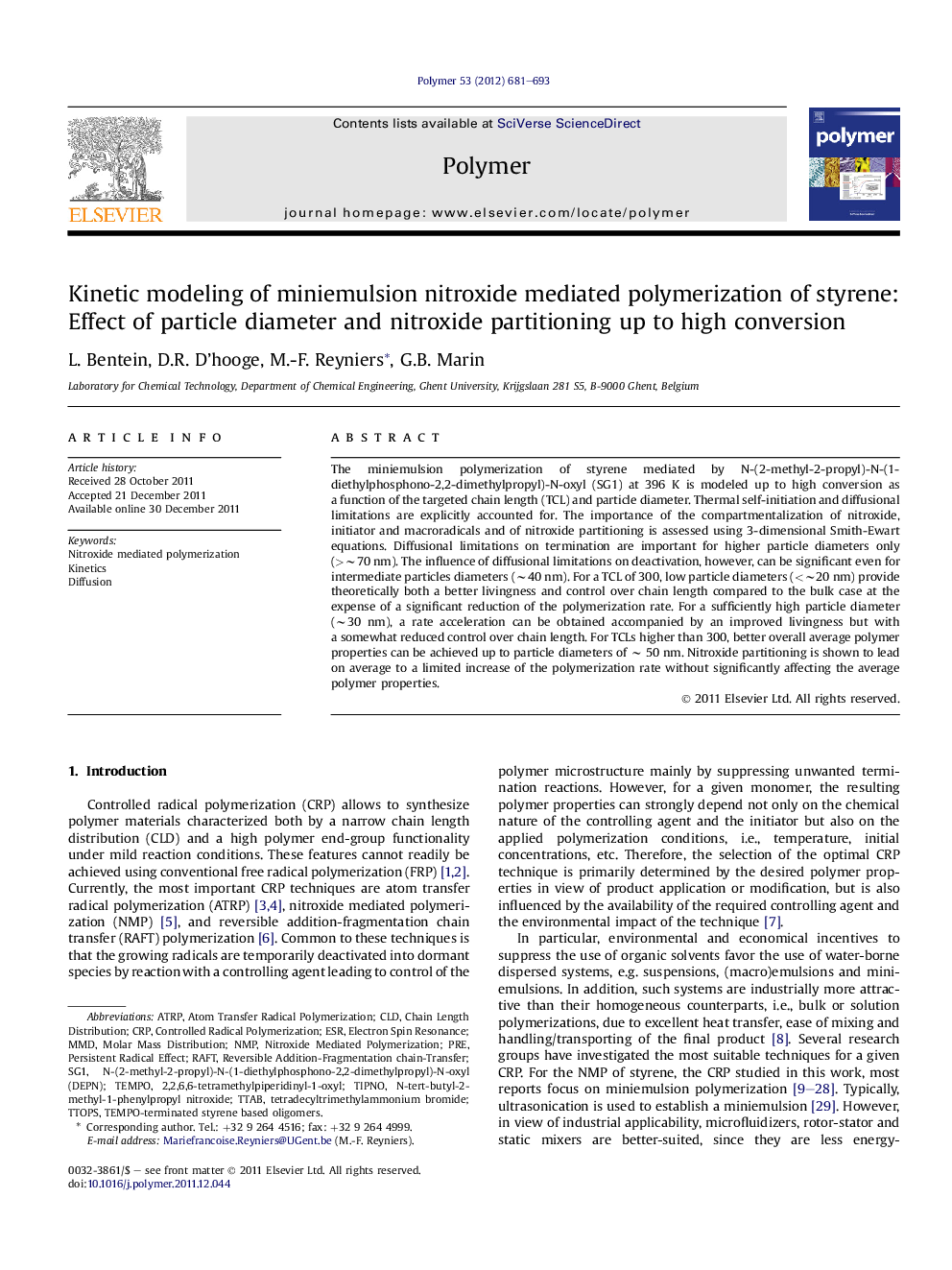| Article ID | Journal | Published Year | Pages | File Type |
|---|---|---|---|---|
| 5183732 | Polymer | 2012 | 13 Pages |
The miniemulsion polymerization of styrene mediated by N-(2-methyl-2-propyl)-N-(1-diethylphosphono-2,2-dimethylpropyl)-N-oxyl (SG1) at 396Â K is modeled up to high conversion as a function of the targeted chain length (TCL) and particle diameter. Thermal self-initiation and diffusional limitations are explicitly accounted for. The importance of the compartmentalization of nitroxide, initiator and macroradicals and of nitroxide partitioning is assessed using 3-dimensional Smith-Ewart equations. Diffusional limitations on termination are important for higher particle diameters only (>â¼70Â nm). The influence of diffusional limitations on deactivation, however, can be significant even for intermediate particles diameters (â¼40Â nm). For a TCL of 300, low particle diameters (<â¼20Â nm) provide theoretically both a better livingness and control over chain length compared to the bulk case at the expense of a significant reduction of the polymerization rate. For a sufficiently high particle diameter (â¼30Â nm), a rate acceleration can be obtained accompanied by an improved livingness but with a somewhat reduced control over chain length. For TCLs higher than 300, better overall average polymer properties can be achieved up to particle diameters of â¼ 50Â nm. Nitroxide partitioning is shown to lead on average to a limited increase of the polymerization rate without significantly affecting the average polymer properties.
Graphical abstractDownload full-size image
